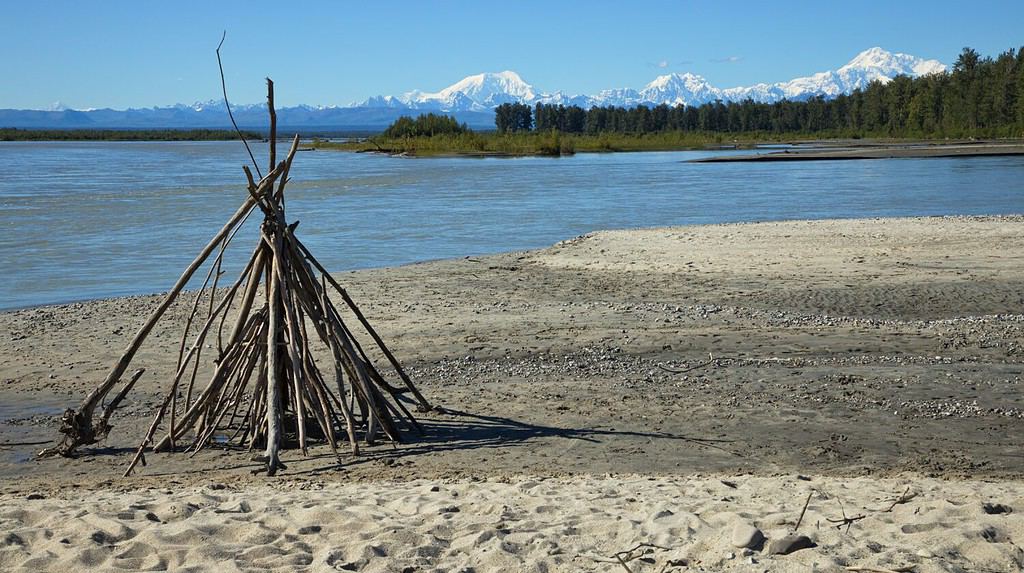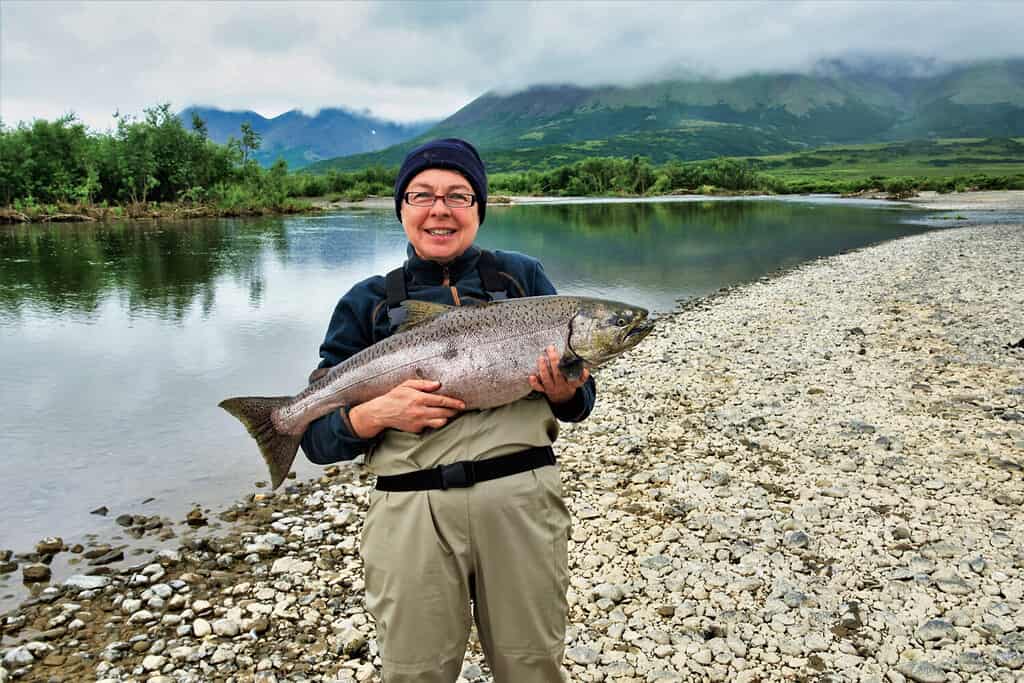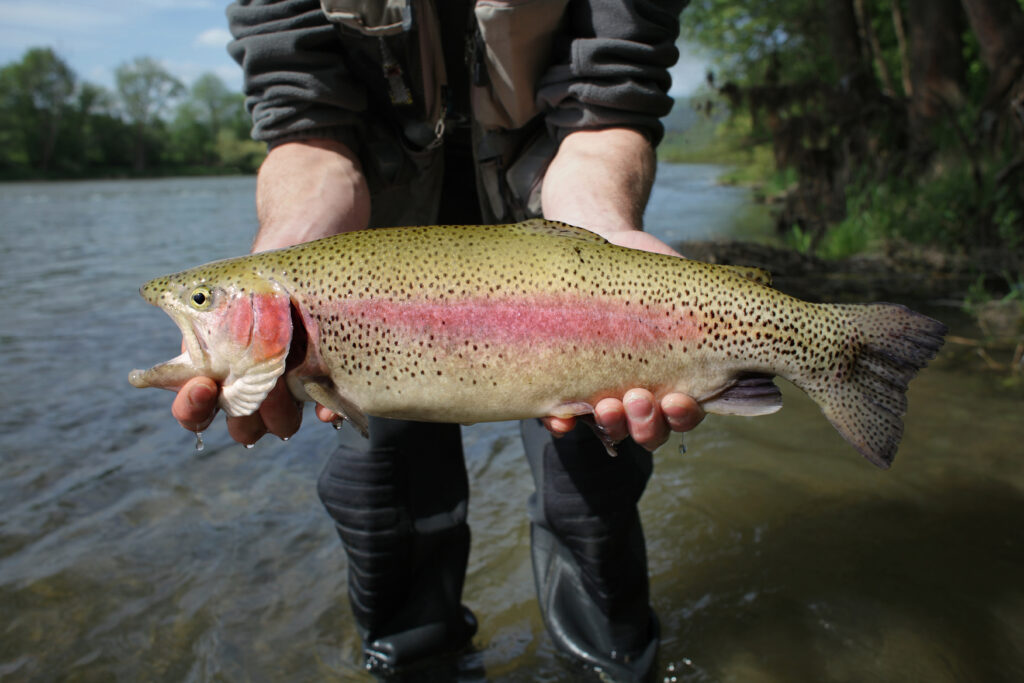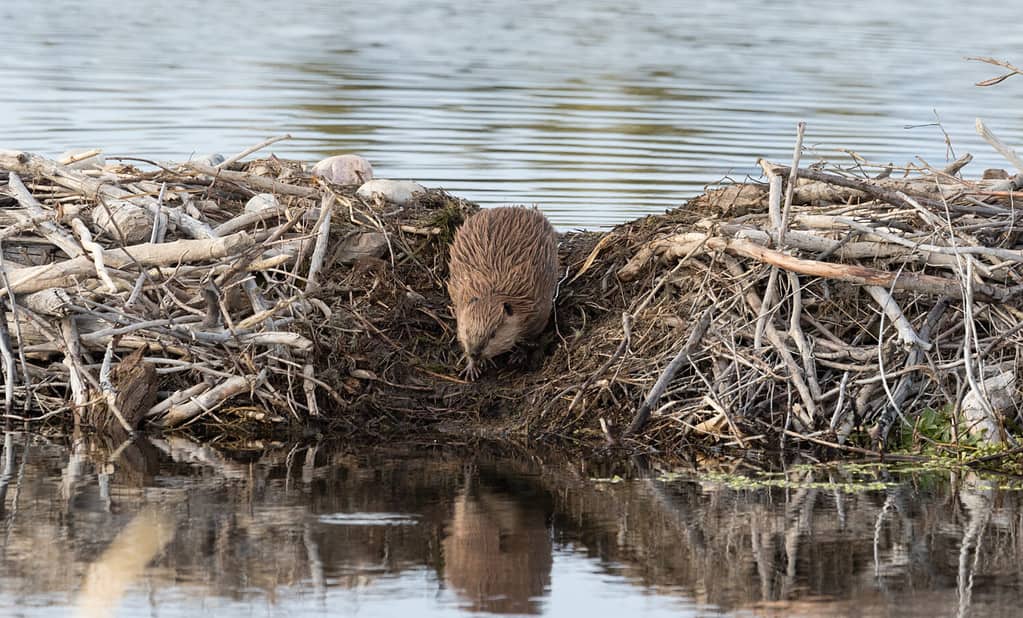Wild swimming in a beautiful river is such an amazing experience that folks like to try it. However, before stripping off, it’s really important to know if you’re diving into a safe place that’s free from pollution and dangerous animals. This article discovers what’s in the Yentna River and if it’s safe to swim in.
Where Is the Yentna River?
Alaska’s 100-mile-long Yentna River rises in the Mount Dall and Russell glacial system and flows southeast to meet the Susitna River, which empties into the Cook Inlet. It’s the largest tributary in the Susitna River basin.
The Yentna River’s landscape is breathtaking. It runs through rugged mountains and valley lowland wilderness. It’s packed with fish and no end of animals drink from its pure waters.

The Yentna River meets the Susitna River and drains into the Cook Inlet.
©Karel Stipek/Shutterstock.com
Is the Yentna River Polluted?
No, Alaska’s glacial rivers are some of the cleanest, most beautiful, and coldest in the world. The Yentna River isn’t polluted, but it’s one of the drainage basins most silty-bedded rivers.
Silt doesn’t prevent swimming, but it can put people off because its opaque water isn’t the crystal clear type we tend to prefer. The Yentna River’s silt isn’t pollution or filth. It’s runoff from the mountains.
What Animals Live in the Yentna River?
The Yentna River runs through wilderness, mountains, and lowlands, so its wildlife is not only varied but tough and pretty spectacular. We’ll start with fish because that’s what it’s most famous for.
Fish in the Yentna River
The Yentna River is not home to dangerous fish; no sharks or stingrays live there, for example, and there are no reports of Pacific Ocean-dwelling orcas making their way upstream. However, you might come across large and aggressive pikes. Salmon is the most plentiful fish there. King, silver, red, chum, and pink salmon all return to spawn in the Yentna.
The Yentna is home to many Pacific salmon species, and Alaska’s Department of Fish and Game believes 50% of Susitna’s sockeye salmon actually spawn in Yentna River’s drainage basin.
Here are a few of the epic fish found in Yentna River waters.
King Salmon
King salmon, also known as chinook salmon, arrive from the Pacific Ocean to spawn in May and the first week of June. Fishing for chinook is a high priority for visiting anglers and the local bear population. They regularly pull 20-50-pound king salmon from the water.
King salmon are North America’s largest and most financially valuable salmon. These attractive fish have blue-green, purple, or red backs, black spots on their tails, and silver sides. Adults average 24 to 36 inches long and weigh up to 50 lbs, but the largest sport king salmon ever caught weighed an epic 97.25 lbs! It was hooked on May 17, 1985, in Alaska’s Kenai River.

King salmon are also called chinook salmon. They spawn in the Yentna River during May.
©FarFlungFotos/Shutterstock.com
Silver Salmon
Silver salmon (called coho) spawn in August, arriving after the larger king salmon have departed. Anglers say silver salmon fight hard and frequently fly out of the river to release their jaws and teeth that grow hooks in spawning season.
Handsome 28-inch-long cohos’ silver sides, metallic blue backs, and bright red sides make the species easily recognizable. Coho only develop this vivid color when they enter freshwater to spawn.
Sockeye Salmon
One of the smaller and most abundant salmon species in the Yentna River, sockeye salmon reach up to 31 inches long and weigh anything between 4 to 15 lbs. Sockeyes return to spawn in Alaska’s Yentna River during June and July. Females deposit up to 5,000 eggs each!
Rainbow Trout
Two types of rainbow trout live in the Yentna River. The stream resident lives only in freshwater, but the ocean-going steelhead ventures further afield. Steelhead juveniles leave freshwater streams and migrate to the Pacific Ocean before returning to spawn.
There’s little difference because it’s the same species, but their ocean-going experiences make steelhead more streamlined and silver. Rainbow trout that remain in freshwater streams retain their vibrant pink and red side markings. Both grow between 7 and 12 inches long and weigh an average of 8 lbs.

Large rainbow trout live in Alaska’s Yentna River.
©pictoplay/Shutterstock.com
Let’s move on from fish! What else lives in the Yentna River? What about snakes?
Do Snakes Live in the Yentna River?
No, warmth-dependent snakes do not live in the Yentna River. It’s much too cold for them. In fact, Alaska is snake-free because it’s too cold, and many areas receive little daylight.
It’s one of the few areas that doesn’t host a resident native snake population, alongside Hawaii, New Zealand, Antarctica, Greenland, and Ireland. Any snakes living there either hitched a lift or escaped captivity.
What Animals Live Near the Yentna River?
Alaska is a diverse state full of epic wildlife. Here are a few of the creatures using the Yentna River.
Brown Bear
Alaska’s top predators, brown bears, use the Yentna River to drink and catch salmon. In spawning season, usually, solitary brown bears gather in numbers to catch leaping salmon.
In the clean wilderness, with abundant salmon and rich vegetation, these indomitable predators reach incredible sizes. Males can reach nine feet on their back legs and weigh 1,000 lbs! You can distinguish brown bears from black bears by their dish-shaped face and shoulder hump. They actually range from dark brown to pale blonde!

Brown bears hunt salmon in Alaska’s freshwater rivers during spawning season.
©iStock.com/Mark Kostich
Beavers
Semi-aquatic chestnut brown beavers are North America’s largest rodent. Adult beavers reach up to four feet (including their tail) and weigh up to 70 lbs in the wild.
Beavers live in the Yentna River, building dams and constructing lodges from twigs and leaves. Beavers fell trees with ease due to their large orange incisor teeth, which are fortified with trace minerals and iron. Large webbed feet, a large 10-inch-long rudder tail, and a thick, warm coat covered in a protective stiff upper layer keep them alive throughout Alaska’s harsh winters. When a beaver works beneath the water, a membrane covers its nose, eyes, and ears.
Herbivorous beavers feast on soft vegetation such as water lilies, cattails, watercress, tree bark, and willows. Their main predators include the Yentna River’s bears, wolves, eagles, and humans.

Beavers build dams in the Yentna River to protect their lodges.
©Ronnie Howard/Shutterstock.com
Moose
Alaska’s moose live in forests alongside the Yentna River and drink its fresh water. It’s the largest subspecies of moose, with some adult males reaching just under seven feet at the shoulder and weighing in at 1,400 lb. Their large palmate antlers reach nearly six feet in width. Antlers‘ size decides their rank and chance of mating, so size matters if you’re an Alaskan moose.
Omnivorous moose eat grasses, lichens, twigs, and leaves. Black bears, wolves, and hunters prey on them in turn. Moose hunting is a big tourist draw for Alaska, alongside salmon fishing.
Bald Eagles
Iconic North American bald eagles nest in large mature tree tops near the Yentna River, feasting on unfortunate salmon and small mammals such as young beavers and pine martens.
Experts believe over half the world’s bald eagle population resides in Alaska’s wilderness due to its abundant food sources. That’s around 30,000 birds, a huge feat considering bald eagles were threatened with extinction. In 1972, only 417 nesting pairs remained, but a DDT pesticide ban and conservation efforts created a massive rebound. In 2007, bald eagles flew from the endangered list.
Distinctive bald eagles have brown feathered bodies, white heads, and ferocious yellow beaks used to tear flesh into strips. Seven thousand feathers insulate their bodies from the Alaskan chill. Despite the name, bald eagles aren’t bald – they got the name from their snow-white heads.

Half the world’s bald eagles live in Alaska, including along the Yentna River.
©Jack Molan/Shutterstock.com
Can You Swim in the Yentna River?
No laws prohibit swimming in the Yentna, but it’s not recommended.
The river is wide, with shifting channels, turbid water, and very low visibility due to its silty nature. An additional danger is brown bears lurking along the riverbanks.
Water depth varies according to the season, but perhaps the main reason you shouldn’t swim in the Yentna River is its deep chill. It’s extremely cold in summer and freezes over at points during the winter. Hypothermia is a real danger there, whatever the season.

Rivers and lakes freeze over during Alaskan winters.
©iStock.com/joshanon
The photo featured at the top of this post is © Oksana Perkins/ via Getty Images
Thank you for reading! Have some feedback for us? Contact the AZ Animals editorial team.







